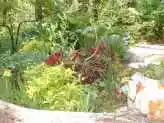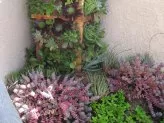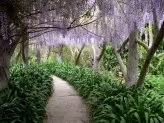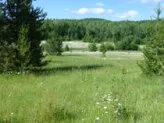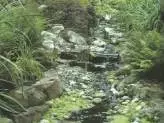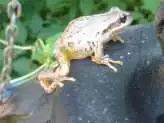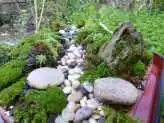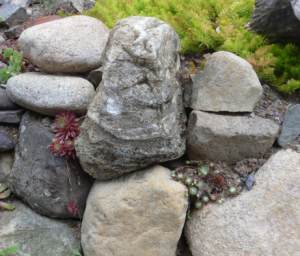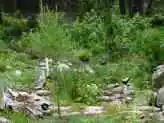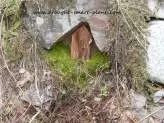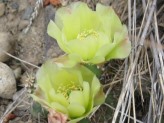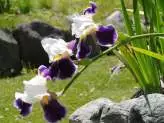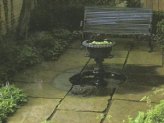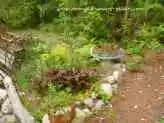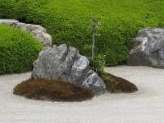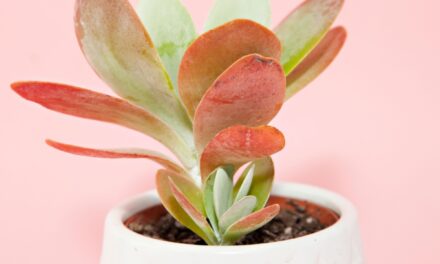The Trials and Tribulations
of Natural Gardening
Where did I get this urge to use low maintenance landscaping in my garden design ideas? Natural gardening, utilizing the drought tolerance of native perennials and shrubs to build the backbone of my garden came, well, naturally.
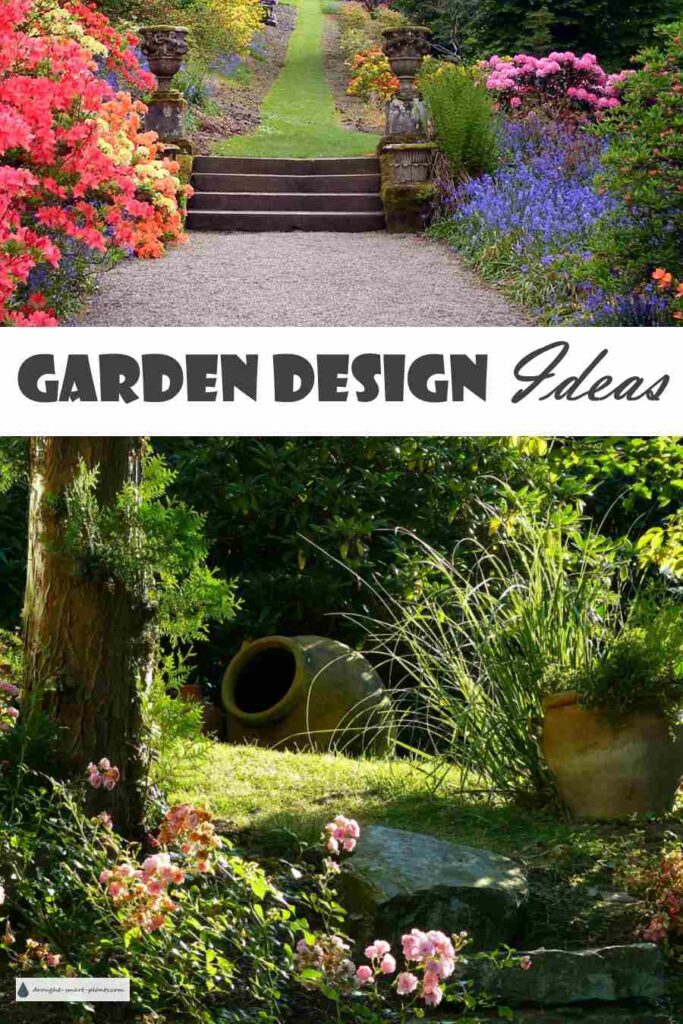
When I first moved to this dry climate and found the mountain side that would become my home, I had grand ideas of a lovely lush perennial garden, filled with blooming plants, buzzing insects and intoxicating scents.
The first thing I tried was to make a lawn. It was only a small lawn, but the native soil was rocky and sandy, and packed tighter than a drum.
I ran the shallow well dry.
This is our only source of water, so it could have been a disaster.
The lawn was left to its own devices and eventually, despite no irrigation it did become a green sward, mixed with clover and other plants that don’t go brown in the summer.
The secret to keeping the grass green and healthy, even growing in the shade of large Douglas fir trees, is the liberal doses of Dolomite lime in the fall. Timing the application to just prior to a rain fall is the key.
Looking for more ideas? Each picture links to another page with inspiring gardens;
How it all started…
I worked for a wholesale nursery in Grand Forks for several years; their stock in trade was prairie hardy shrubs and trees, including native plants.
I felt that this was a burgeoning industry, ripe for me to get a tiny piece of, so after building a greenhouse, I tried my hand at growing plugs of all kinds of nursery stock.
The propagating part was easy, as that’s my forte. Growing the plugs to a salable size with a lack of available water, well, that was another thing entirely.
A friend in the industry suggested I grow thyme plugs, and she said she would purchase off me, so I started assembling as many different kinds of thyme that would be hardy to Zone 3, and after a few trials, started to produce them.
The huge sale never happened.
I grew lots of thyme plugs to sell to home owners putting in thyme lawns; however, it became apparent that thyme really needs to be custom grown. It hates to be confined in those tiny cells for any length of time.
For my next xeric plants, I thought, Sedum, that’s the ticket! I grew Sedum for green roofs, for xeric gardens, all sold mail order – fantastic! I had a winner.
Then I discovered – or should I say – rediscovered – Sempervivum. Those ubiquitous hens and chicks that you and I remember from childhood – they were in every garden, as they’re easy to grow, impossible to kill.
My light bulb moment was when I became aware of the thousands of different ones. Small, fuzzy ones; smooth dinner plate sized ones; red, burgundy, lime green, almost black; the choice was endless.
As an offshoot of my attraction to Sempervivum, I also discovered some similar hardy succulents, Rosularia, Jovibarba and Orostachys. These are hard to find, but well worth the effort to locate them.
My low maintenance landscaping is filled with all kinds of xeric plants.
These are the test gardens, where all manner of perennials are trialed for their real drought tolerance. There are no wimps here – all are tough, hardy and resistant to the challenges of growing in an arid climate. If they don’t survive – and thrive – in the conditions in my sandy, acid, zone 5 garden they don’t make the list of recommended plants for xeriscaping.
Natural gardening – even when not actually growing native plants – could be summed up with that old saw, the right plant in the right place. Nature knows which plants should go under and beside others of similar needs.
The beauty of low maintenance landscaping is that the shrubs and perennials that you grow don’t require water, pruning and constant attention.
The dormancy of late summer ends when the fall rains come. Snow contributes a warm blanket through the winter, and a good soaking once it starts to melt.
That lush, blooming perennial garden? I have that too, without any added water, using well adapted drought tolerant plants. Now, that’s my kind of garden design idea!

It can be hard to know where to start planning to redesign your garden. Not all of us are garden landscapers and it’s nice to have some visual inspiration. This infographic discusses some of the current garden design trends so you can get a feel for the type of style you want. Whether that be sprucing it up with lights and a Moroccan feel, adding an Indian fire pit or taking a fresh alfresco feel.
Interested in more about Indian Fire Bowls?
What Other Visitors Have Said
Click below to see contributions from other visitors to this page…
Growing Banana Trees in a Drought-Tolerant Garden
Banana Trees are tropical plants. They love rich, deep soils. They love water, both in the soil and the air (humidity). They don’t like hot sun, they don’t …


